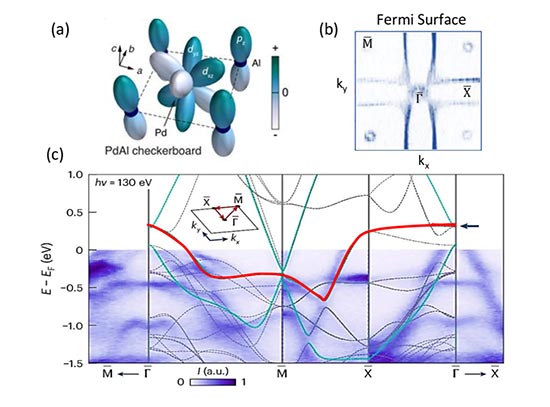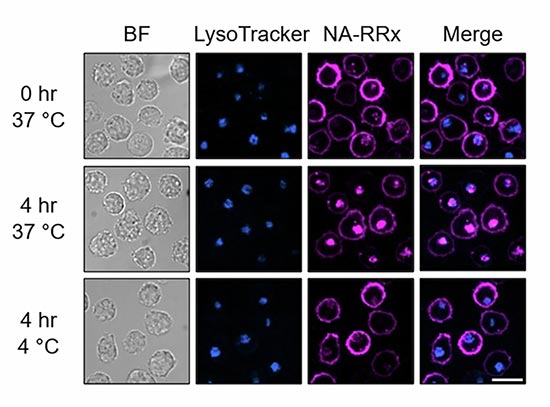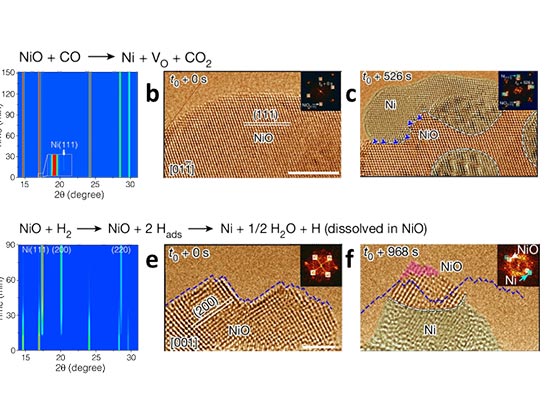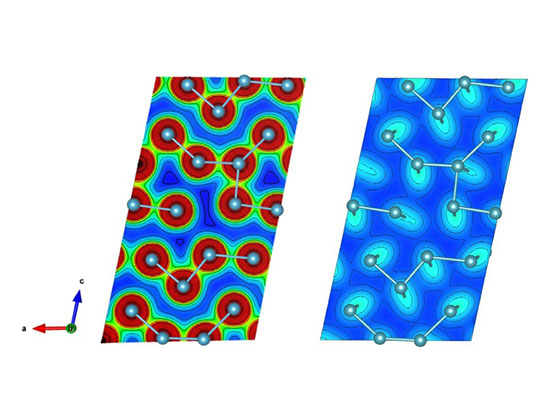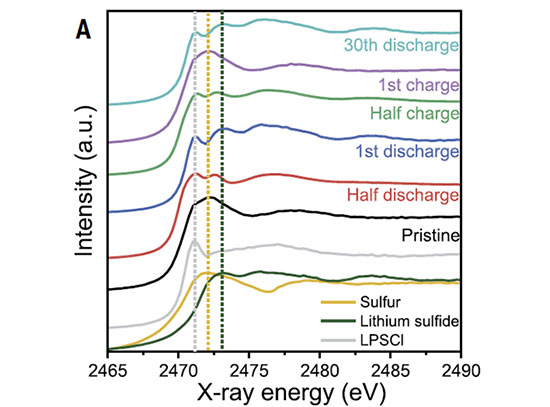Predicting the Durability and Activity for Pt Catalysts
Future eco-friendly cars could use proton-exchange membrane fuel cells based on platinum (Pt) catalysts.
October 12, 2022
 enlarge
enlarge
A dealloying process is used to form Pt-alloy catalysts with similar morphologies and compositions. The descriptor proposed in this work can predict their different activities and stabilities. Image courtesy of J. Huang et. al. Nature Catalysis 5, 513–523 (2022).
The Science
Scientists have shown that specific x-ray absorption spectral features correlate with the fine structure of Pt alloys and can be used as a descriptor to predict both the activity and stability of the catalysts.
The Impact
The adoption of proton-exchange fuel cells is hindered by the lack of predictability of highly active and durable Pt-based catalysts for accelerating the sluggish oxygen reduction reaction. This work opens a way to uncover the missing information.
Summary
A potential candidate to fuel the next generation of eco-friendly cars are proton-exchange membrane fuel cells. These fuel cells convert hydrogen and oxygen into water when generating energy. However, a critical technological roadblock for the adoption of these fuel cells is the development of highly active and durable Pt-based catalysts for accelerating the sluggish oxygen reduction reaction.
In this study, a team of researchers developed a binary experimental descriptor that captures both the strain and alloying transition metal coupling contributions through X-ray absorption spectroscopy. They collaborated with the scientists at the Beamline for Materials Measurements (BMM), the Inner-Shell Spectroscopy (ISS), and Quick X-ray Absorption and Scattering (QAS) beamline at the National Synchrotron Light Source II (NSLS-II), a U.S. Department of Energy (DOE) Office of Science user facility located at DOE’s Brookhaven National Laboratory, to collect the needed experimental data.
The team supported these measurements with simulations of catalytic intermediates and X-ray absorption spectra, leading to an experimentally validated Sabatier plot that can predict both the catalytic activity and stability for a wide range of Pt-alloy oxygen reduction reaction catalysts.
Download the research summary slide (PDF)
Contact
William A. Goddard III
California Institute of Technology
wag@wag.caltech.edu
Alessandro Fortunelli
Consiglio Nazionale delle Ricerche
alessandro.fortunelli@cnr.it
Qingying Jia
Northeastern University
qjia@iit.edu
Yu Huang
University of California, Los Angeles
yhuang@seas.ucla.edu
Publications
J. Huang, L. Sementa, Z. Liu, G. Barcaro, M. Feng, E. Liu, L. Jiao, M. Xu, D. Leshchev, S.–J. Lee, M. Li, C. Wan, E. Zhu, Y. Liu, B. Peng, X. Duan, W. A. Goddard III, A. Fortunelli, Q. Jia, Y. Huang. Experimental Sabatier plot for predictive design of active and stable Pt-alloy oxygen reduction reaction catalysts. Nature Catalysis 5, 513–523 (2022). [DOI: 10.1038/s41929-022-00797-0]
Funding
Y.H., Q.J., W.A.G. and X.D. gratefully acknowledge the support of the Office of Naval Research (award N000141812155). The XAS data were collected at beamlines 6-BM, 7-BM and 8-ID of the National Synchrotron Light Source II, a US Department of Energy Office of Science User Facility operated for the Department of Energy Office of Science by Brookhaven National Laboratory under contract no. DE-SC0012704. We acknowledge the use of facilities and instrumentation at the University of California Irvine Materials Research Institute, supported in part by the National Science Foundation Materials Research Science and Engineering Center programme through the University of California Irvine Center for Complex and Active Materials (DMR-2011967). We also thank the Electron Imaging Center of Nanomachines at the California NanoSystems Institute (CNSI) for TEM support. A.F. and W.A.G. received support from the National Science Foundation (CBET-1805022 and CBET-2005250). A.F., G.B. and L.S. gratefully acknowledge the contribution of the International Research Network on Nanoalloys Centre national de la recherche scientifique (CNRS) and computational support from the CINECA supercomputing centre within the Italian SuperComputing Resource Allocation (ISCRA) programme.
2022-21017 | INT/EXT | Newsroom




